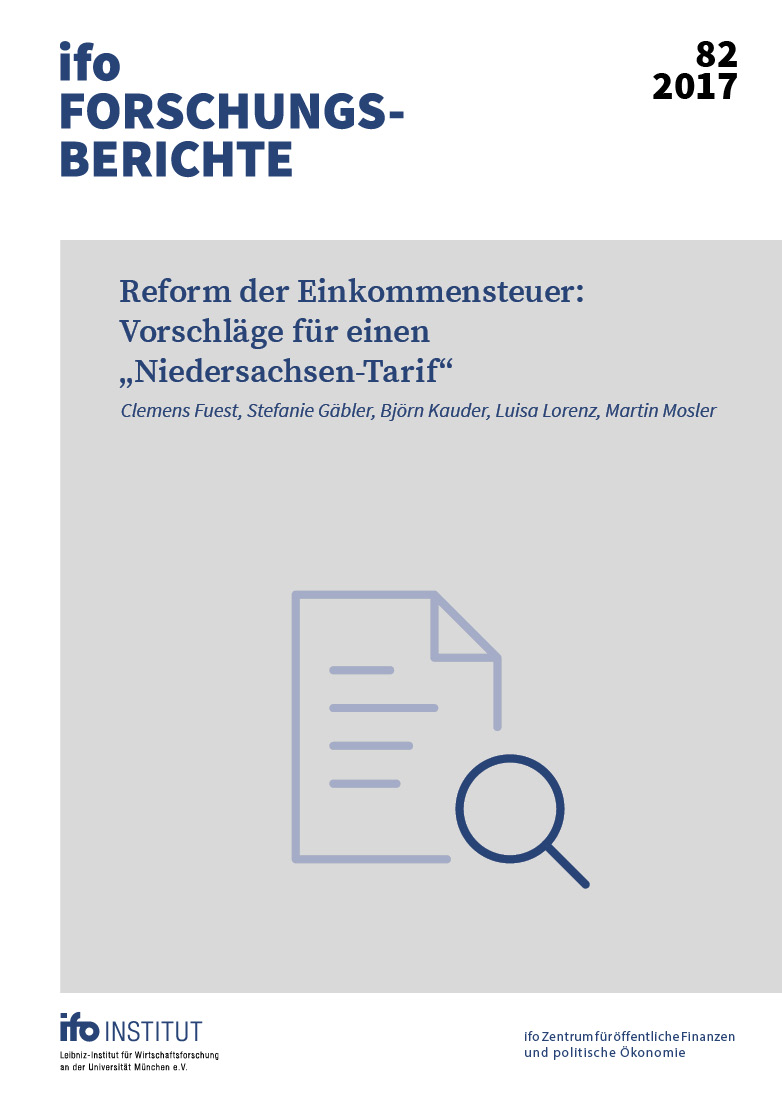Reform of the income tax: the rate of the Federal State of Lower Saxony
ifo Institut, München, 2017
ifo Forschungsberichte / 82

This study investigates four reform options that lead to tax relief for low and medium-income earners, while moderately burdening higher income-earners. The solidarity surcharge is abolished. The minimum exempted income and the lowest marginal income tax rate remain unchanged in all scenarios. The upper limit of the second tax bracket is always increased to 58,000 euros, whereas the upper limit of the third tax bracket (the amount as of which the "wealth tax" has been applied to date) is dropped to 150,000 euros. The marginal tax rates at the second and third borders are increased to 45 and 49%, respectively. In reform option I, for example, the end of the first bracket is shifted from 14,000 euros to 25,000 euros and the marginal tax rate is raised from 24% to 30.5%. Taxpayers in the lower and middle income tax brackets are far better off. For childless (single) individuals the tax burden increases when their gross income exceeds 112,500 euros. Relative to their gross income, taxpayers in the seventh income decile benefit the most. The fiscal costs of this scenario amount to 10.7 billion euros. For reform option II, which completely removes the middle-class bulge, the losses in tax revenues, by contrast, would be 39.3 billion euros. Childless (single) taxpayers would only bear an additional burden if they earn more than around 160,000 euros in gross income. The maximum relative relief occurs in the eighth income decile, and the only tax increase occurs in the tenth decile.